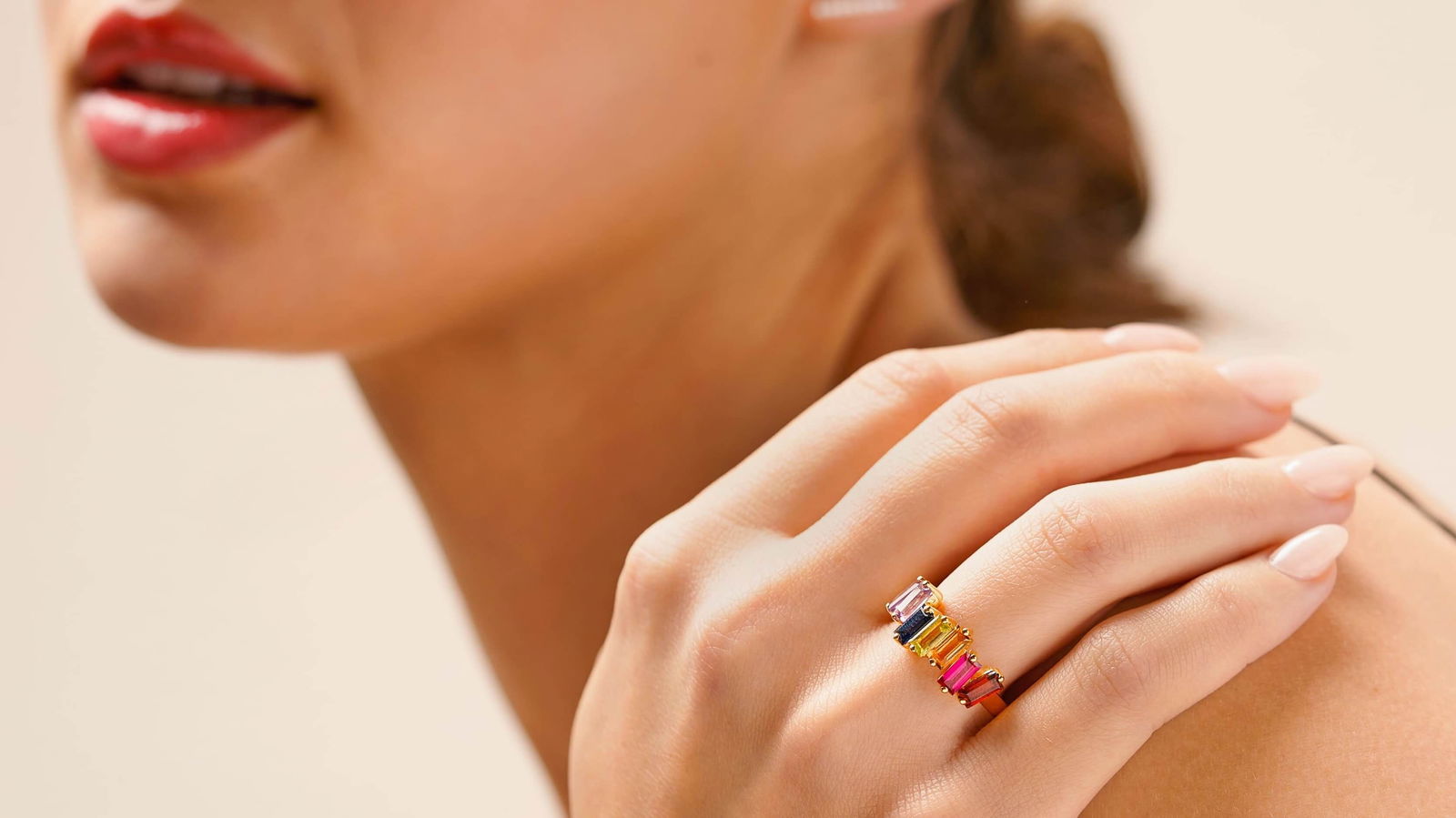Engagement Ring vs. Wedding Ring: Do You Need Both?

Engagement Ring vs. Wedding Ring
If your partner surprised you with a perfect engagement ring, you might be wondering whether you really need to add another ring to your ring finger when you get married. What’s the difference between an engagement ring and a wedding ring? And if you love your engagement so much – do you really need to add another ring, or can you just continue wearing the same one after the wedding? Let’s clear up these questions about engagement and wedding ring etiquette once and for all.
Traditionally, an engagement ring usually features a dominant gemstone that either stands alone or is surrounded by smaller stones. It is typically given as part of a proposal or at the very beginning of the engagement.
In contrast, the wedding ring is traditionally a simple diamond, metal, or eternity band that is given during the exchange of vows at the wedding ceremony and worn daily thereafter. There is usually also a significant price difference between engagement and wedding rings; even if the wedding ring is set with diamonds or other precious stones, its total carat weight is typically lower than that of the engagement ring.
Of course, you can break with tradition. Brides today have more say in choosing and designing their rings, according to experts. And they are not only moving away from tradition but also choosing to get creative when selecting engagement and wedding rings. “People are doing what they want, and engagement rings give you a chance to show more personality,” they say.
How to Wear Engagement and Wedding Rings
Traditionally, engagement and wedding rings are worn together on the ring finger of the left hand. As for the order, tradition says the engagement ring should be worn beneath the wedding ring, closer to the heart.
Some brides, however, prefer to wear the engagement ring on one hand and the wedding ring on the other – especially if the rings are very different and hard to stack together.
When to Choose Wedding Rings
We recommend couples choose their wedding rings at least two months before the wedding. “This gives you time to accommodate any last-minute wedding planning details, and your rings can be made on time.”
Do You Need Both?
Ultimately, it really depends on personal preference. If you like the traditional look, then yes, absolutely. Whether you add a pavé diamond eternity ring or a simple metal band, the engagement and wedding ring combo is timeless and beautiful. And a recent trend that’s not going away is creating a stack of three (or more!) bands, often with mixed metals and styles.
Of course, it’s completely fine if you prefer to wear just one ring to symbolize both your engagement and your (future) marital status. Here are a few practical reasons why some brides opt for just one ring:
Single rings can be more comfortable and lower maintenance than a combination of engagement and wedding rings – and can look absolutely stunning on their own. It’s one less ring to worry about losing (especially important if you tend to misplace things). You also don’t have to stress about matching two rings perfectly; it can be tricky to find a wedding band that suits your engagement ring if they weren’t purchased as a set. The funds that would normally go toward both an engagement and a wedding ring can be invested into one exceptional ring instead.
When it comes to choosing, designing, or wearing engagement and wedding rings, there’s no right or wrong answer. You can wear none, one, two, three, or even more rings – just make sure the ring(s) you choose to wear to symbolize your love and marriage have lasting meaning for you for many years to come.

